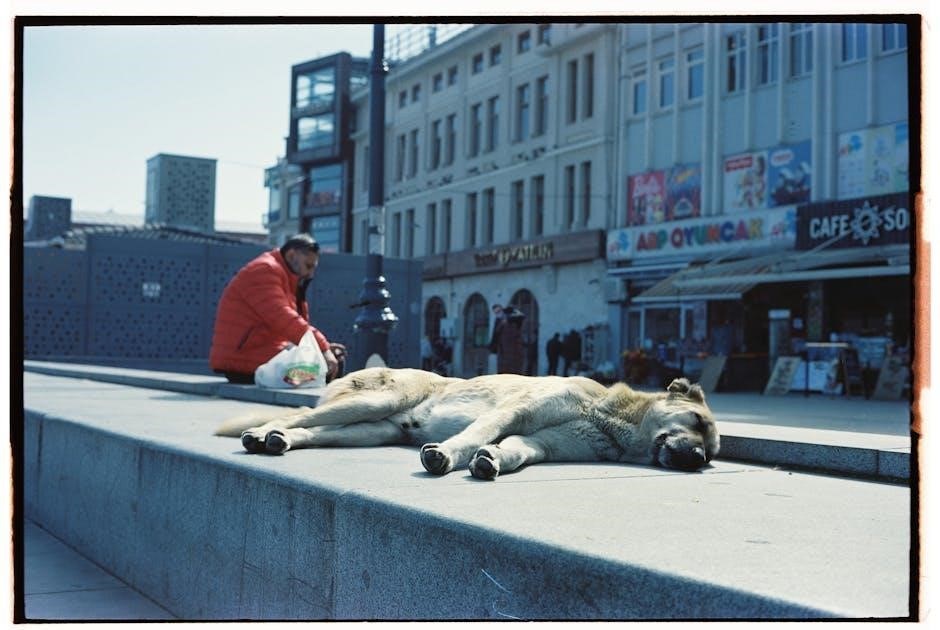Sleeping bag temperature ratings are essential for ensuring comfort and safety outdoors. They indicate the range of temperatures a bag can handle‚ from cozy nights to extreme cold. Understanding these ratings helps you choose the right bag for your adventures‚ ensuring warmth and restful sleep in varying climates.
Why Understanding Temperature Ratings is Crucial
Understanding sleeping bag temperature ratings is vital for ensuring safety and comfort during outdoor adventures. These ratings provide critical information about the bag’s ability to retain warmth in varying conditions‚ preventing hypothermia and discomfort. Misjudging a bag’s temperature range can lead to inadequate insulation or overheating‚ both of which can ruin an otherwise enjoyable experience. Temperature ratings help you prepare for extreme cold‚ allowing you to choose a bag that matches your needs for specific environments. They also account for factors like personal metabolism‚ gear quality‚ and sleeping conditions‚ ensuring you stay warm even in harsh weather. By grasping these ratings‚ you can avoid the risks of underestimating cold temperatures and select a bag that offers the right balance of warmth and versatility. This knowledge is especially important for backpackers and campers‚ where every degree of warmth matters. Ultimately‚ understanding temperature ratings ensures you’re well-equipped for any adventure‚ whether it’s a summer trek or a winter expedition.

How Temperature Ratings Are Determined
Sleeping bag temperature ratings are determined through standardized laboratory tests‚ such as the EN (European Norm) standard‚ which measures warmth retention using heated mannequins. Factors like insulation‚ construction‚ and user demographics influence the final ratings‚ ensuring accuracy for real-world conditions.
The Role of the EN Standard

The EN (European Norm) standard plays a pivotal role in assessing sleeping bag warmth; It involves testing sleeping bags in controlled laboratory conditions using heated mannequins to simulate human heat loss. The EN standard provides three key temperature ratings: Comfort‚ Lower Limit‚ and Extreme.
Comfort Rating is the temperature at which an average woman can sleep comfortably‚ while the Lower Limit indicates the temperature at which an average man remains warm. The Extreme Rating is the minimum temperature a sleeping bag can handle‚ though it’s meant for survival rather than comfort.
This testing ensures consistency and comparability across brands‚ helping consumers make informed decisions. The EN standard is widely adopted and trusted‚ offering a reliable benchmark for evaluating sleeping bag performance in various conditions.

Key Factors to Consider When Choosing a Sleeping Bag
When selecting a sleeping bag‚ consider temperature ratings‚ insulation type‚ fit‚ and personal comfort preferences. These factors ensure the bag meets your needs for warmth‚ durability‚ and versatility across different outdoor conditions and adventures.
Insulation Types and Their Impact on Warmth
Insulation is a critical component of a sleeping bag‚ directly affecting its warmth and performance. The two primary types are down and synthetic insulation. Down insulation‚ often preferred for its lightweight and high loft‚ traps heat efficiently‚ making it ideal for cold conditions. However‚ it loses insulating properties when wet. Synthetic insulation‚ on the other hand‚ retains warmth even when damp‚ making it a practical choice for wetter climates. Both types are available in various fills and densities‚ impacting the overall warmth and packability of the bag. The choice between down and synthetic depends on the user’s needs‚ including expected weather conditions‚ weight preferences‚ and budget. High-quality insulation ensures consistent warmth‚ crucial for comfort during outdoor adventures‚ and directly influences the temperature ratings assigned to the sleeping bag. Proper care and maintenance of the insulation are essential to uphold its performance over time. Understanding the pros and cons of each insulation type helps in selecting the right sleeping bag for optimal warmth and reliability in diverse environments.

The Importance of Fit and Shape

The fit and shape of a sleeping bag significantly impact its performance and comfort. A well-fitting bag ensures efficient heat retention‚ while a poor fit can lead to cold spots and discomfort. Common shapes include mummy‚ rectangular‚ and semi-rectangular designs. Mummy bags are snug‚ reducing unused space and maximizing warmth‚ making them ideal for cold weather. Rectangular bags offer more room to move‚ suiting warmer conditions or restless sleepers. Semi-rectangular bags strike a balance‚ providing moderate warmth and mobility. Factors like girth measurements‚ hood design‚ and footbox shape also matter. A bag that fits your body type ensures proper insulation and comfort. Consider whether you prefer a loose fit for mobility or a tighter fit for warmth. Additionally‚ features like adjustable hoods and draft collars can enhance thermal efficiency. Ultimately‚ the right shape and fit ensure optimal performance‚ making your sleeping bag a reliable companion for outdoor adventures. Choosing the correct fit is as crucial as selecting the right temperature rating for a comfortable and restful night’s sleep. Proper fit also extends the lifespan of the bag by preventing excessive wear from constant movement.
Understanding Comfort‚ Lower Limit‚ and Extreme Ratings
Comfort rating: the lowest temperature for a comfortable night’s sleep. Lower limit: the threshold where the bag keeps you warm but not comfortably. Extreme rating: for survival in extreme cold‚ not for regular use. These ratings guide your choice based on expected conditions.

Comfort Rating Explained
The Comfort Rating indicates the lowest temperature at which an average cold sleeper can enjoy a comfortable night’s sleep. It is based on EN 13537 testing‚ which measures how well a sleeping bag maintains body heat. This rating is particularly relevant for women‚ as it is determined by testing with female subjects. A higher comfort rating means the bag is suitable for colder conditions. For example‚ a comfort rating of -10°C means the bag will keep you warm and comfortable in temperatures as low as -10°C. However‚ individual preferences may vary‚ and some users might need a slightly warmer or cooler bag. Always consider your personal sleep style and the expected weather conditions when selecting a sleeping bag based on its Comfort Rating.
Lower Limit and Extreme Ratings Explained
The Lower Limit Rating represents the temperature at which a male sleeper can remain warm for 8 hours without feeling cold‚ based on EN 13537 testing. It reflects the bag’s ability to maintain body heat in colder conditions‚ prioritizing survival over comfort. The Extreme Rating signifies the minimum temperature a sleeping bag can handle‚ ensuring survival for a short period. This rating is crucial for extreme situations but not for prolonged use. Both ratings help users understand the bag’s performance in harsh environments‚ guiding decisions for adventures in cold climates. Understanding these ratings ensures selecting the right bag for specific conditions‚ balancing safety and comfort effectively.